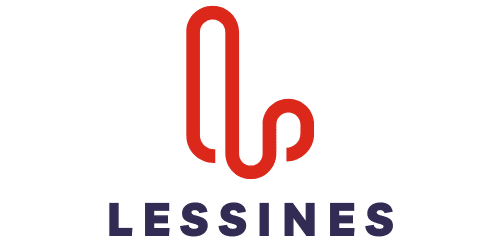How to Implement Neurofeedback Training in High Jumpers for Concentration Enhancement?

As we delve into the 21st century, the field of sports performance continues to evolve at an astonishing pace. Emerging technologies and innovative methodologies are constantly branching out, transforming the traditional paradigms of coaching and athletic performance. One such groundbreaking approach is neurofeedback training (NFT), a form of biofeedback that uses real-time EEG to teach the brain self-regulation. Particularly effective in improving concentration and mental performance, this method has shown promising results for a myriad of applications – from boosting the abilities of scholars to enhancing the skills of high jumpers. In this article, we will guide you through the integral steps to implement neurofeedback training with high jumpers, and examine how this innovative tool can revolutionize athletic performance.
Understanding the Core Concept: Neurofeedback Training (NFT)
Before we delve deeper into the application of neurofeedback training with athletes, it’s paramount to grasp the fundamentals of this cutting-edge tool. Neurofeedback Training (NFT) relies on the use of real-time displays of brain activity—most commonly electroencephalography (EEG)—to teach self-regulation of brain functions. It is essentially a kind of biofeedback and is used to improve mental performance, support behavior modification, and treat an assortment of cognitive and psychological disorders.
A lire également : How Can Genetic Testing Inform Personalized Training Regimens for Elite Swimmers?
The first step in implementing neurofeedback training is to conduct an initial EEG. This procedure involves placing electrodes on the scalp to measure electrical activity in various regions of the brain. The acquired data provides a unique ‘brain map’, offering insights into the person’s cognitive function. This map serves as a foundation for the creation of a personalized neurofeedback training program.
The Relevance of Neurofeedback Training in Athletic Performance
Sporting performance is not just about physical prowess and technical skills. The mental component plays an equally crucial role in determining the success of an athlete. The ability to maintain concentration, manage stress, and exhibit control under pressure are all vital skills that athletes need to hone. This is where neurofeedback training comes into play.
Avez-vous vu cela : What Techniques Can Increase Proprioceptive Skills in Figure Skaters?
Neurofeedback aids in enhancing these cognitive skills by training the athlete’s brain to operate more efficiently. It does so by providing instant feedback about the state of our neurophysiological responses, enabling us to gain control over them and achieve desired outcomes. Studies have shown that neurofeedback training can enhance attention, improve stress management, and boost overall mental performance.
High jumpers, for instance, can benefit immensely from neurofeedback training. The sport demands immense concentration and precision timing, both of which can be honed through NFT.
Practical Steps to Implement Neurofeedback Training with High Jumpers
Implementing neurofeedback training in high jumpers, or any athletes, involves a systematic approach. The first step, as mentioned earlier, is conducting an EEG to map the athlete’s brain activity. Once this baseline is established, a personalized training program can be designed.
This training typically involves the athlete sitting in front of a computer screen, with EEG sensors attached to their scalp. Visual or audio signals corresponding to the athlete’s brainwaves are then presented. The athlete is trained to control and modify these signals, thereby learning to manage their brain activity.
The learning phase is generally followed by a reinforcement phase, where the new skills are practiced and consolidated. The duration and frequency of the sessions can vary based on the individual’s needs and progress.
Measuring and Evaluating the Effects of Neurofeedback Training
The effectiveness of neurofeedback training can be gauged through continuous assessment. Periodic EEGs can be used to measure changes in the brain’s electrical activity, which can be compared to the initial baseline to assess progress. Additionally, the athlete’s performance in their sport can also serve as a practical indicator of the training’s effectiveness.
A Google Scholar search reveals numerous studies attesting to the efficacy of neurofeedback training in enhancing athletic performance. For example, researchers have found that athletes who underwent neurofeedback training showed significant improvements in concentration, stress management, and decision-making skills.
In conclusion, neurofeedback training represents a powerful tool in the arsenal of modern sports performance enhancement. With a systematic approach and consistent practice, it can potentially revolutionize the way athletes train and perform.
The Role of Advanced Technology in Neurofeedback Training
The advent of advanced technology, like real-time EEG displays and brain training apps, has greatly facilitated the implementation of Neurofeedback Training (NFT). These tools provide instantaneous feedback on an athlete’s brain activity, enabling them to self-regulate their cognitive functions for peak performance.
Real-time EEG displays are critical for the initial brain mapping process. They allow a comprehensive understanding of the athlete’s regular neural patterns and responses, which aids in creating a personalized training program. With these brain maps, the trainer can identify areas that need improvement and develop a tailored training plan for the athlete.
Brain training apps, on the other hand, have made NFT more accessible and consistent. These apps can provide visual or audio cues corresponding to the athlete’s brainwaves, helping them gain control over their brain function. They can also track and record data over time, allowing for progress monitoring and program adjustments.
One thing to keep in mind is that while technology plays a massive role, the human element – the expertise of the coach or trainer – is equally vital. They guide the athlete through the process, ensuring they understand the feedback and learn to adapt their brain function accordingly. They also make necessary adjustments to the program based on the athlete’s progress, ensuring the training remains effective and beneficial.
Long-Term Benefits of Neurofeedback Training for High Jumpers
The benefits of neurofeedback training for high jumpers are not merely short-term. The skills training they receive through NFT can lead to long-lasting changes in their brain function, thereby contributing to sustained improvement in their athletic performance.
One of the key benefits is the enhancement of psychological skills. High jumpers require intense focus and impeccable timing. By promoting self-regulation of brain activity, NFT helps athletes manage their attention levels effectively. This could lead to improved performance during competition, where distraction management is crucial.
Stress and anxiety management is another long-term benefit of NFT. The ability to control one’s neurophysiological responses can aid in coping with the high-pressure situations that are inherent in sports competitions. This can reduce performance-related anxiety and help athletes perform at their best even under stressful conditions.
Lastly, neurofeedback training can improve working memory. This can be particularly beneficial for high jumpers as it can enhance their coordination and timing – two critical factors for successful performance in this sport.
Conclusion: The Future of Athletic Performance Enhancement
Neurofeedback training is increasingly recognized as a game-changer in athletic performance enhancement. By providing real-time feedback on brain activity, it empowers athletes to control their cognitive functions and achieve peak performance. This is particularly beneficial for high jumpers, who require exceptional concentration, timing, and stress management skills.
Advanced technology like real-time EEG displays and brain training apps have made NFT more accessible and effective. They not only facilitate the initial brain mapping process but also allow for consistent training and progress monitoring. Meanwhile, the role of the trainer remains irreplaceable, guiding the athlete through the process and making necessary adjustments based on progress.
The benefits of neurofeedback training are not just short-term. The psychological skills training, stress management abilities, and improved working memory that athletes gain through NFT can lead to long-term changes in brain function and sustained enhancement in performance.
Lastly, a review of studies on Google Scholar and PubMed reveals the efficacy of neurofeedback training in improving athletic performance. The future of sports training is here, and it lies in harnessing the power of the brain for peak performance. As research in this field continues to grow, we can look forward to even more sophisticated NFT methodologies and tools emerging. Onward and upward!
